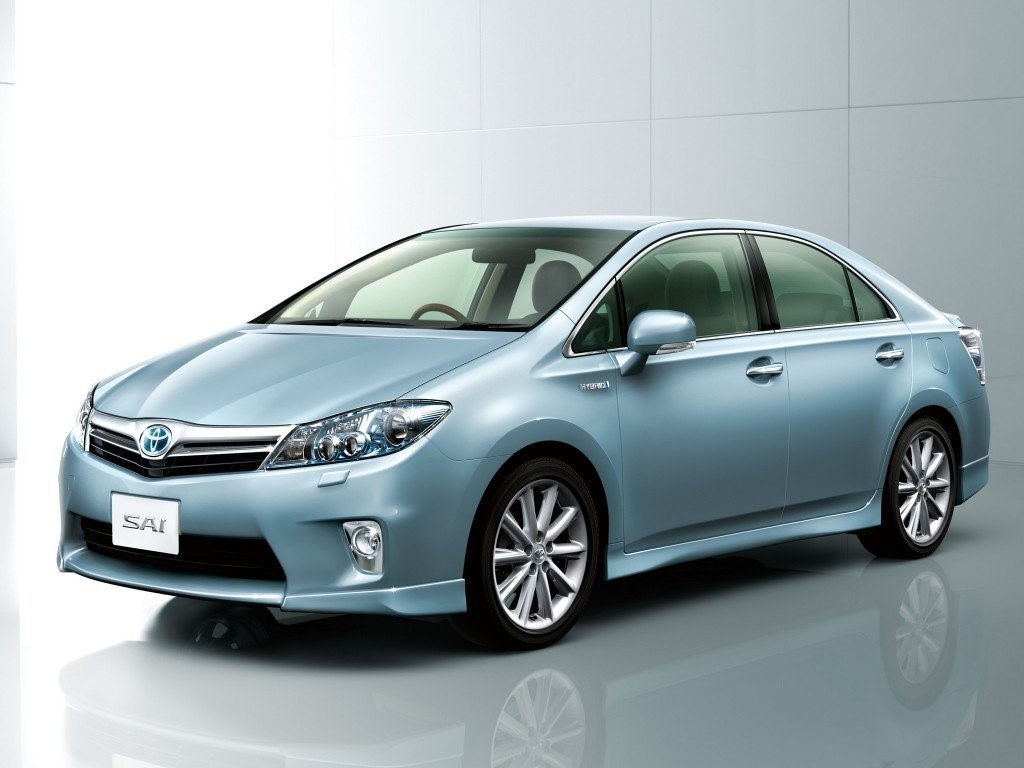
Toyota Sai engines
This car was built on a completely new base and is a direct analogue of the Lexus HS. The presentation of this vehicle took place in mid-2009 at the Tokyo Motor Show. It differed from other cars in that only a hybrid engine was installed in it.
This model is a follower of the Prius, but the main difference between them is that the Sui is a higher-class car. The Japanese domestic market received this model at its disposal in December 2009.

As power plants are used: Atkinson gasoline engine with a volume of 2.4 liters and an electric motor. This combination of THS-II. Another advantage of this hybrid vehicle is its very high environmental friendliness: 85% of the car parts are made from recycled materials, and 60% of the interior elements are made from environmentally friendly plastic, which is of plant origin. It is also worth noting the economic performance of the Sai model: for 23 km it will blow out only 1 liter of gasoline. The aerodynamic drag coefficient is Cd=0.27, which gives the car an advantage over other vehicles of its class.
Appearance and interior space
The exterior and interior of this Toyota model was designed using the Vibrant Clarity philosophy (“ringing purity”). On the outside of the vehicle, you can see that the line of the hood tilt smoothly passes to the surface of the windshield, and then descends along the rear window to the trunk lid and ends at the rear lights. This gives the impression of a very voluminous body.

The cabin space of the car is very spacious. The designer managed to make a very spectacular center console, on which there is a Remote Touch remote control, with which the multimedia system and the on-board computer are controlled. It is also worth noting the screen of the multimedia system, which extends from the front panel.
Packages
The basic equipment received the S mark and was equipped with a hard drive navigation system, climate control, a leather steering wheel, power door mirrors, an electrically adjustable driver's seat, a 6-speaker audio system, and 16-inch alloy wheels. More expensive equipment with the G index boasts an electric steering wheel and a front row of seats with memory settings, standard LED headlights, 18-inch aluminum wheels, a more advanced multimedia system, better interior materials, an AS-pacage package that helps the driver drive a car, body kit and spoiler.
There is also an exclusive line of Toyota Sai cars, which was labeled as S Led Edition.
The release of this version began only in 2010. It differs from other configurations with more advanced Led optics and a body kit and a spoiler that increases the aerodynamic characteristics of the vehicle, as well as the Touring Selection package, which also gives the car a sporty appearance.
Technical equipment
The chassis of the Toyota Sai is equipped with Mapherson independent suspension at the front, and a suspension with double anti-roll bars at the rear. Improved steering rack response to steering wheel angle changes is provided by electrical power steering. Another advantage of this type of power steering is that, unlike the hydraulic mechanism, it does not take power from the motor., which further affects the economic indicators of fuel consumption.

The brake mechanisms of all wheels are of a disc type, and the products installed on the front axle are equipped with special ventilation holes. The car has the following dimensions: 4610 mm long, 1770 mm wide, 1495 mm high. The minimum turning radius is 5,2 meters, given that the vehicle is fitted with standard 16-inch wheels.
The designers have taken great care with the battery layout and rear suspension design to achieve a generous 343 liters of luggage space, which is very good for a hybrid vehicle.
Security
Standard equipment Toyota was equipped with 10 airbags, active head restraints for the front row of seats and ABS + EBD systems. Electronic systems control the vehicle's directional stability and the operation of the traction control system and cruise control. An additional safety package that could be installed in the car before purchase includes: a system that pre-protects the car from a collision with an installed camera in the front, adaptive cruise control, which is based on millimeter-wave radar.

Engines
As stated earlier, the car is powered by a 2.4-liter VVT-I petrol engine and an electric motor. The first unit has four cylinders arranged side by side, each of which has 4 valves. Its power is 150 hp. at 600 rpm. It has a higher efficiency than the Toyota Prius engine, which is also based on the Atkinson cycle.
The synchronous electric motor runs on alternating current and is capable of developing a power of 105 kW.
This unit incorporates 34 nickel-metal hydride batteries, the capacity of each of them is 3,5 Ah. The battery pack is installed in the bottom of the vehicle. The maximum power of the car is 180 km / h, and it accelerates to 100 km / h in just 8,8 seconds. The transmission is a continuously variable gearbox. The fuel tank has a volume of 55 liters.

